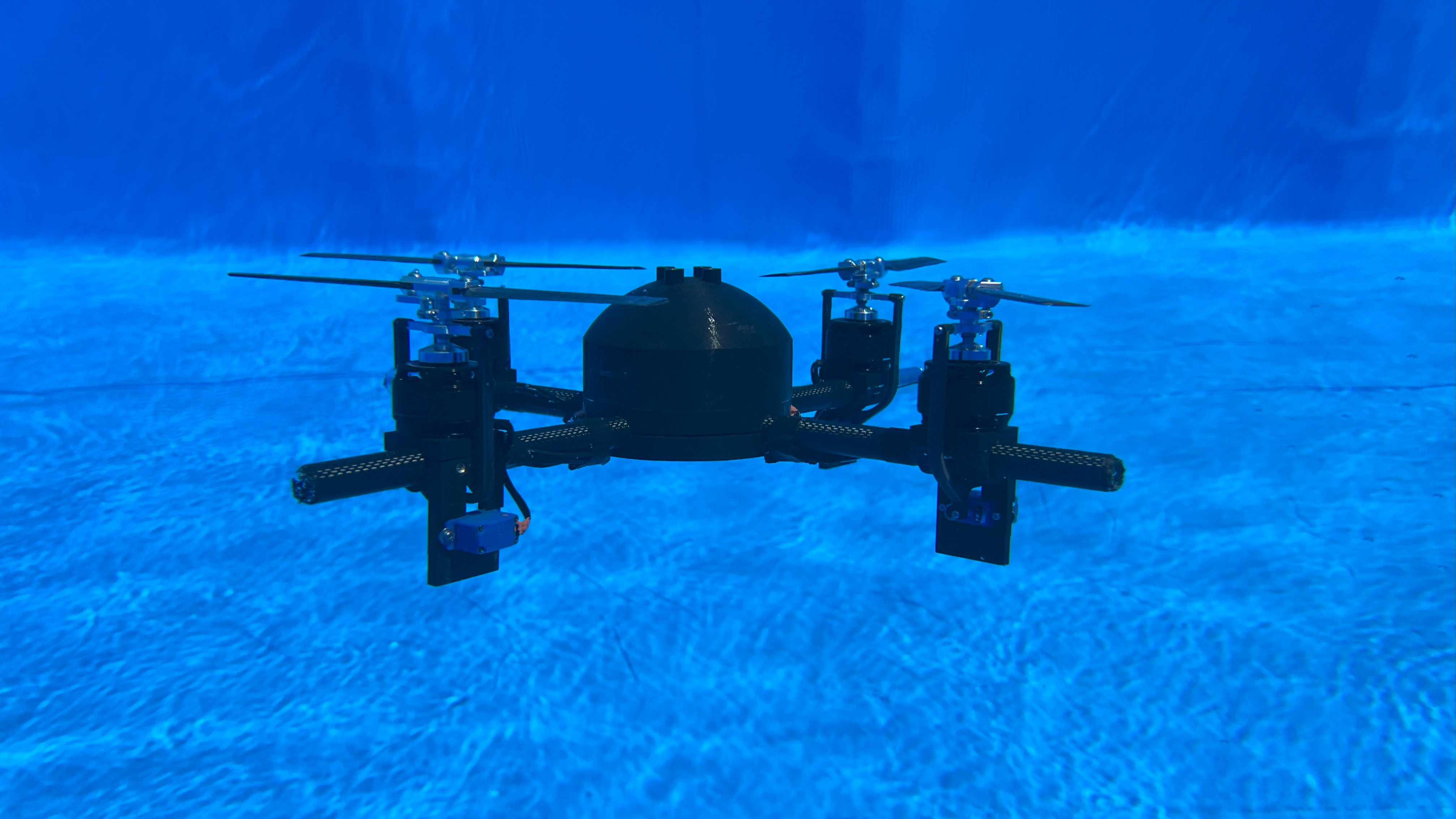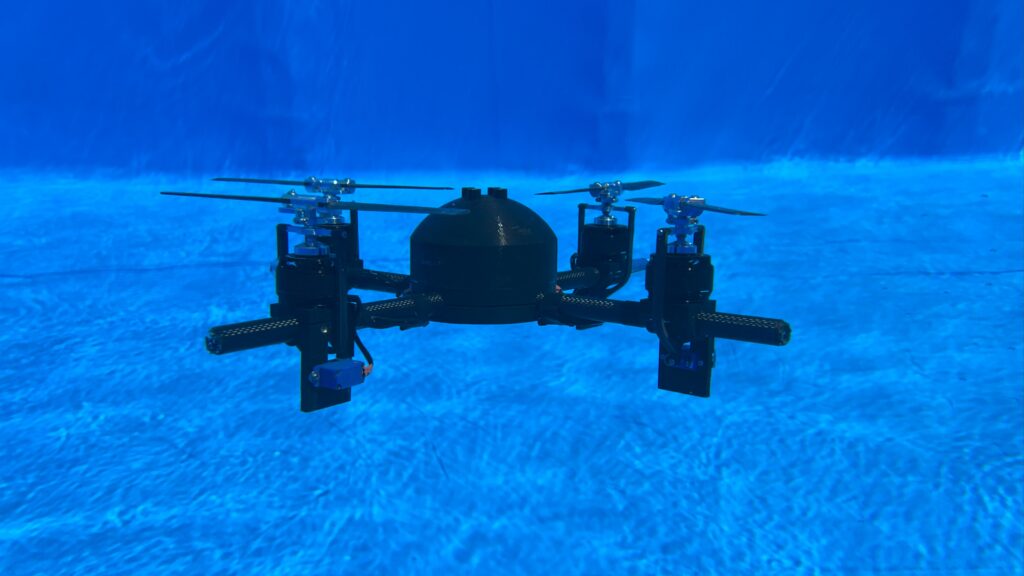Students have built a hybrid drone that can seamlessly transition from flying in the air to swimming in water.
The students developed a working prototype of the hybrid drone for a bachelor’s thesis at Aalborg University in Denmark, and recently shared a video of the drone in action.
In the video, the drone takes off next to a large pool of water and then quickly dives underwater. It then moves around beneath the surface for a few seconds before shooting straight out of the water to fly once again. The video shows the drone repeating the trick several times from different angles.
Andrei Copaci, Pawel Kowalczyk, Krzysztof Sierocki and Mikolaj Dzwigalo, who are all studying applied industrial electronics, achieved this remarkable air-to-water transition by using variable pitch propellers, which have blades that can rotate at different angles to match the two different environments.
“The development of an aerial underwater drone marks a major step forward in robotics, showing that a single vehicle can operate effectively in both air and water thanks to the use of variable pitch propellers,” the students told Live Science in a joint email.
This isn’t the first air-water hybrid drone to be built. Researchers at Rutgers University in New Jersey developed a hybrid prototype that could perform a similar action in 2015, while Chinese scientists showed off a drone transitioning from air to water in 2023.
Related: Best drones for wildlife and landscapes in 2025 — Explore and capture the world from above
The students designed, built and tested their drone over two semesters at their university, according to a LinkedIn post by Petar Durdevic, an associate professor who leads the Offshore Drones and Robots research group at Aalborg University.
They began by creating a model of the drone and designing the variable pitch propeller system. The angle of the blades, or propeller pitch, is higher when flying to create more air flow, while lower in the water to minimize drag and increase efficiency. The propellers are also capable of providing negative thrust to increase maneuverability underwater, the students said.

The team used a 3D printer and a computer numerical control machine — another piece of automated manufacturing equipment — to get the parts they needed for the build, and programmed the drone with custom software. Finally, they moved on to testing.
“We were surprised how seamlessly the drone transitions from water to air,” the students said.
The new drone is just a single prototype, but this kind of technology has a variety of potential real-world applications, from emergency response to warfare. “A few of the applications are military, vessel inspections, marine exploration, search and rescue,” the students said.
